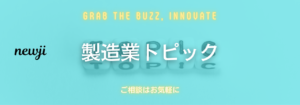- お役立ち記事
- Improving product value through sound design and practical points

Improving product value through sound design and practical points

目次
Understanding the Concept of Sound Design
Sound design is an essential aspect of product development that often goes unnoticed by the average consumer, but it plays a crucial role in enhancing the user experience.
In essence, sound design refers to the process of creating auditory elements that complement a product’s functionality and aesthetic.
This can range from the subtle clicks of a camera shutter to the distinctive sound of a vacuum cleaner in operation.
Good sound design can significantly enhance the perceived value of a product, making it more appealing to potential customers.
The Importance of Sound in Product Design
Sound is a powerful yet often underestimated tool in product design.
It serves not only practical functions but also emotional and aesthetic ones.
Consider the soft chime you hear when a laptop powers up, or the specific alert for a new message on your smartphone.
These sounds are carefully crafted to convey information and create a sense of satisfaction and completion for the user.
Moreover, sound design influences branding.
For example, the unique sound of a Harley Davidson motorcycle is as much a part of its brand identity as its visual appearance.
In such cases, the sound can become a signature element, setting the product apart from its competitors.
Key Elements of Effective Sound Design
Effective sound design is about more than just creating pleasing sounds; it’s about crafting an auditory experience that enhances the overall product value.
Recognizable Sounds
First, the sound should be recognizable and memorable.
A distinctive sound that users associate with a particular action or product can become a powerful branding tool.
For instance, the sound of a Mac computer starting up is instantly recognizable to users worldwide.
Appropriate Volume Levels
Volume is another critical component of sound design.
Sounds that are too loud can be disruptive, while those that are too soft might go unnoticed.
The ideal sound should be audible yet not overpowering, seamlessly integrating into the user’s environment.
Cohesion with Product Functionality
The sound must also complement the product’s functionality and enhance the user’s experience.
It should be intuitive, providing audio feedback that aligns with the visual and tactile elements of the product.
Practical Points in Utilizing Sound Design
For businesses looking to leverage sound design, there are several practical considerations.
Understanding the Target Audience
Knowing your target audience is vital to creating effective sound design.
Different demographics may respond differently to certain sounds.
For example, younger audiences might appreciate more dynamic and bold audio cues, while older users may prefer more subtle and gentle sounds.
Testing and Iteration
Testing is critical in sound design.
It’s essential to gather user feedback and iterate on the sound elements used in the product.
This approach helps ensure that the sound design aligns with user expectations and enhances their experience.
Integration with Other Design Elements
Sound should complement other design elements rather than clash with them.
For example, a sleek, modern product design might be complemented by clean, minimalistic sounds rather than complex, layered audio.
The goal is to create a cohesive sensory experience for the user.
The Benefits of Good Sound Design
Investing in sound design can yield significant rewards for companies.
Not only does it enhance the user experience, but it also contributes to brand identity and distinguishes products in a crowded marketplace.
Increased Customer Satisfaction
When sound design is done well, it increases customer satisfaction by making products more enjoyable to use.
A satisfying click, chime, or alert can bring a sense of joy and efficiency to everyday tasks, contributing to a positive user experience.
Boosted Brand Loyalty
Good sound design can foster brand loyalty.
When users have positive auditory experiences with a product, they are more likely to remember the product fondly and choose it over competitors in the future.
Enhanced Product Differentiation
In a competitive market, sound design can set your product apart.
A unique sound that resonates with consumers can become a defining feature, making your product stand out from similar offerings.
Conclusion
Sound design is more than just an afterthought in product development; it’s a strategic tool that can significantly enhance product value.
By focusing on elements like recognizability, appropriate volume, and alignment with product functionality, businesses can create memorable auditory experiences that resonate with users.
The practical application of these principles, alongside understanding the target audience and effective testing, can lead to increased customer satisfaction, brand loyalty, and product differentiation.
Ultimately, sound design is a critical component that should never be overlooked in the pursuit of creating outstanding products.
 資料ダウンロード
資料ダウンロード
QCD管理受発注クラウド「newji」は、受発注部門で必要なQCD管理全てを備えた、現場特化型兼クラウド型の今世紀最高の受発注管理システムとなります。
 NEWJI DX
NEWJI DX
製造業に特化したデジタルトランスフォーメーション(DX)の実現を目指す請負開発型のコンサルティングサービスです。AI、iPaaS、および先端の技術を駆使して、製造プロセスの効率化、業務効率化、チームワーク強化、コスト削減、品質向上を実現します。このサービスは、製造業の課題を深く理解し、それに対する最適なデジタルソリューションを提供することで、企業が持続的な成長とイノベーションを達成できるようサポートします。
 製造業ニュース解説
製造業ニュース解説
製造業、主に購買・調達部門にお勤めの方々に向けた情報を配信しております。
新任の方やベテランの方、管理職を対象とした幅広いコンテンツをご用意しております。
 お問い合わせ
お問い合わせ
コストダウンが利益に直結する術だと理解していても、なかなか前に進めることができない状況。そんな時は、newjiのコストダウン自動化機能で大きく利益貢献しよう!
(β版非公開)


